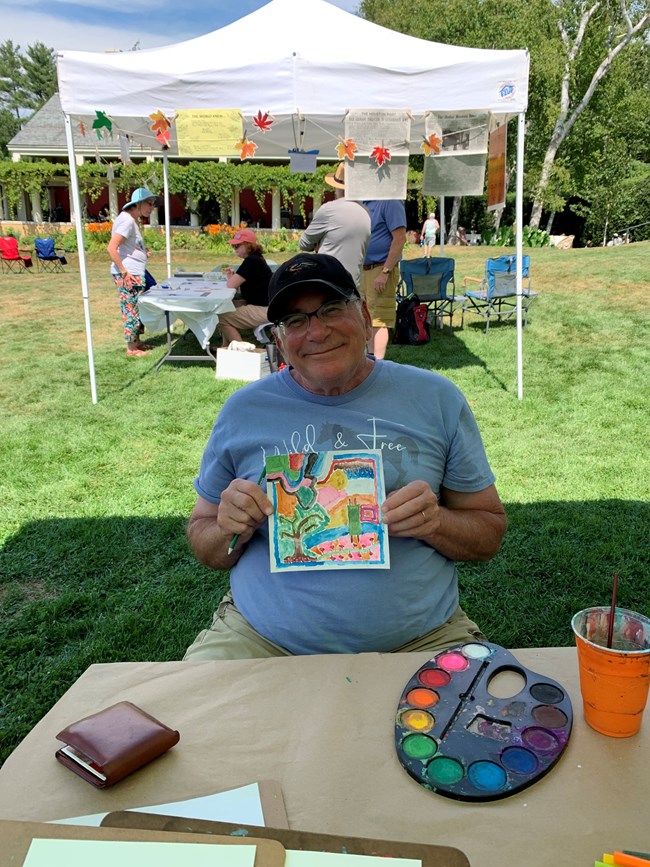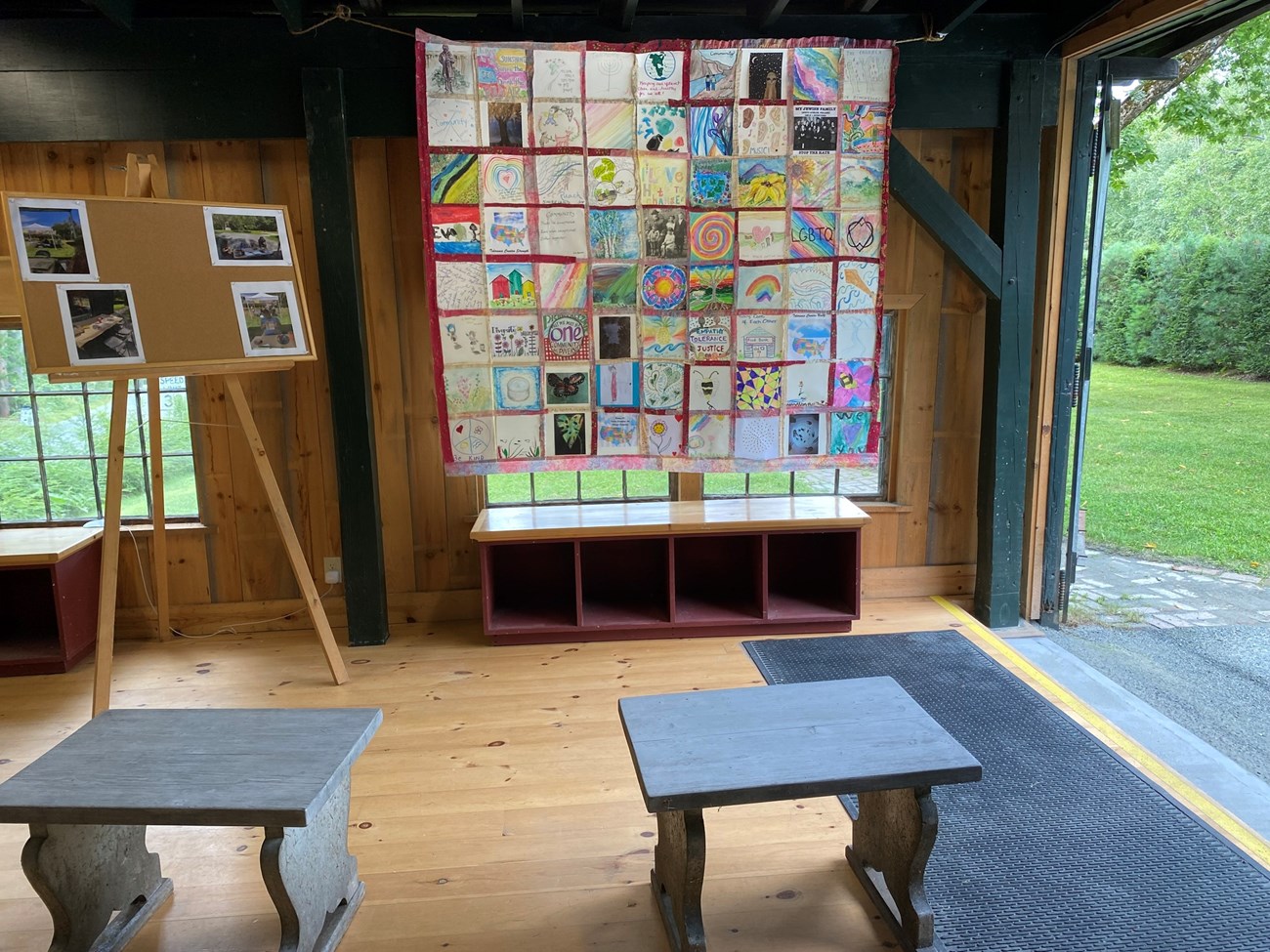Last updated: November 13, 2023
Article
Inclusivity Through Art at Saint-Gaudens National Historical Park

NPS Photo
Saint-Gaudens is one of a handful of National Park Service sites that exist to celebrate and commemorate art and artists. Although the park's primary purpose is to interpret the life and art of Augustus Saint-Gaudens and the Cornish Art Colony, the park’s storytelling scope extends to exploring the role of art in sociey, including the role art plays in shaping American identity, community representation, and wellness. Over the years, the park has worked to tell more inclusive stories and examine the intersection between public art, representation, and equity.
In late September 2021, rangers at Saint-Gaudens National Historical Park arrived for work and discovered that a marble memorial had been defaced the previous night with antisemitic symbols and words. While talented conservators from Region 1’s Historic Architecture Conservation and Engineering Center (HACE) responded within days to restore the Temple memorial, the park soon came to realize the act had caused other harms to the wider community. When news of the incident went public, a community member contacted the park and informed staff that the act coincided with the anniversary of the Babi Yar Massacre, one of the deadliest events of the Holocaust, where more than 30,000 Jews were marched into a ravine outside Kyiv, Ukraine and murdered. It is unclear if the Temple vandalism was timed to coincide with this tragedy or was coincidental to it, but the act opened old wounds and caused members of the community to question their sense of belonging and safety.
The park recognized that the work it needed to do to repair the damage caused by the vandalism was more than just physical. The park issued an unequivocal condemnation of anti-Semitism and began working with both new and existing community partners to support healing for those affected. Planning began for a community art project and a special Jewish-themed concert as part of the park’s annual summer music series. The process came to encompass park staff, individual community members, the Upper Valley Jewish Community, and the park’s legislative partner, the Saint-Gaudens Memorial.
In August of 2022, the music of Pneuma, a Jazz-infused Klezmer group, echoed across the lawn as dozens of people created individual art squares that illustrated the meaning of community to them. Nearly 400 people, including many new visitors to the park, gathered for the special event. In the following weeks, park staff joined these individual perspectives on community into a single quilt by arranging torn fabric around each square of paper. This method honored the Jewish tradition of Kiriah, or "tearing" in Hebrew. The act of tearing one's clothing or cutting a black ribbon to wear is an expression of grief and loss. The torn fabric was used to the bond together the works of art by the community and heal what had been lost. As the fabric overlapped and touched each square, the quilt began to transform from individual expressions of community into one piece of art. After displaying the quilt at the park during the 2022 season, it was transferred to the Upper Valley Jewish Community Center for permanent display.
In the end, the horrible act of anitsemetic vandalism brought our community together instead of tearing it apart. By listening to our community and working with new partners, the park became a place where people felt welcomed and that they belonged - a purpose just as important as telling the story of Augustus Saint-Gaudens and the Cornish Art Colony.

NPS Photo
